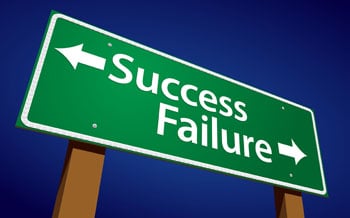Finding and hiring great sales talent is difficult. There are many characteristics you must ensure a candidate has in order to be successful with your organization. However, there are a few key attributes you need to look for during the interview process to increase you likelihood of hiring success.
My pup, Rocky, loved to lay on top of pillows. ALL pillows. He didn’t care if they were round, square, flat, cushy, or even sewn on and attached to the back of the couch- he would find a way to lay on them. And though it irritated me to no end, I appreciated his determination. He would do whatever he had to to be on top. He was the epitome of the great sales candidates you should be looking for- except maybe the dog part.

Great sales candidates will think the same way Rocky did- they have to be on top. They will do whatever it takes to make sure that they are successful. They will find ways to differentiate themselves amongst their peers. The hardest part, however, is being able to spot those great salespeople without wasting a lot of your, or their, time.
A great salesperson should prove to you that they:
- Can handle themselves well on the phone and won’t get flustered when challenged by a prospect
- Have a strong will and determination to succeed in their role, with your company, in your selling environment
- Will ask robust follow-up questions to get the specifics required to properly qualify an opportunity
- Can close for the next step at the end of the call
The number one question I ask myself after any interview is this: “Would I like to compete with them in the marketplace?” If the answer is no, strongly consider this individual for a position within your organization. The interviewing process you put candidates through should work to identify these key traits.
What if they don’t have the specific experience you are looking for? Don’t worry! You can train someone on the technical parts of being a banker, relationship manager or insurance rep, but it’s a lot harder to train them to be a great salesperson.
So, when you are interviewing sales talent, remember Rocky and his never-ending quest for higher, softer ground and his grit to get there. He was the kind of top dog you should look to add to your team.







 In general, there are two different types of classifications in sales; Business-to-Business (B2B) or Business-to-Consumer (B2C). B2B — meaning you supply a product or service directly to an organization — i.e. you provide a chemical coating that will be sold to an aircraft manufacturer and applied to rotors. B2C — being that you provide a product or service directly to the end user — i.e. you sell anti-aging skincare products using social media and your network to women 30+. But what if what you do falls somewhere in-between?
In general, there are two different types of classifications in sales; Business-to-Business (B2B) or Business-to-Consumer (B2C). B2B — meaning you supply a product or service directly to an organization — i.e. you provide a chemical coating that will be sold to an aircraft manufacturer and applied to rotors. B2C — being that you provide a product or service directly to the end user — i.e. you sell anti-aging skincare products using social media and your network to women 30+. But what if what you do falls somewhere in-between?
